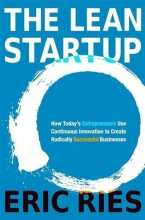Hunger, Eating and Health - Theories of Hunger and Eating: Set Points versus Positive Incentives
5 important questions on Hunger, Eating and Health - Theories of Hunger and Eating: Set Points versus Positive Incentives
What does the set-point theory assume?
It assumes that our eating is homeostatically regulated. If we eat too much, our body will compensate that with a higher expendure or eating less the next meal.
How does a set-point system works and how many components does it have?
It exists of three components:
1. Set-point mechanism
2. Detector mechanism
3. Effector mechanism
The set-point mechanism defines the set-point (in this case; bodyweight). The detector mechanism detects changes that differ from the set-point (in this case it would be weight gain or more food in zhe body). The effector-mechanism acts to eliminate deviations (in this case; satiety, no more food is wanted in zhe body).
What are the glucostatic and lipostatic theories?
1. Glucostatic: Our hunger-system of regulated by the amount of glucose used as a set-point. This seems logical since glucose is the brains primary fuel.
2. Lipostatic: Our body has a set-point for body-fat, the amount of fat is regulated by the body. This seems logical since adults have a relatively constant weight.
- Higher grades + faster learning
- Never study anything twice
- 100% sure, 100% understanding
What is the conclusion that came from the gluco- and lipostatic theory?
That these systems work complementary, we have both sensors for glucose and fat in our body. Glucose is the short-term regulation system and fat is the long-term regulation system.
What are three major weaknesses concerning the set-point theory according to Pinel?
1. It is inconsistent with basic eating-related evolutionary pressures as we understand them.
2. Major predictions of the set-point theory have not been confirmed. Although it has been informed in laboratory rats that ate more after depletion of fat/gucose, in humans we still get hungry although we have excessive fat deposits.
3. Set-point theories do not take other important factors into account, such as social influence, taste, and emotion (hedonic factors).
The question on the page originate from the summary of the following study material:
- A unique study and practice tool
- Never study anything twice again
- Get the grades you hope for
- 100% sure, 100% understanding
































